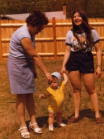Activities directors and other healthcare professionals here is a great dementia resource for caregivers and healthcare professionals,
Here is information on being the best caregiver you can be
Here is a way for nurses administrators, social workers and other health care professionals to get an easyceu or two

Get your subscription to Activity Director Today's e magazine
Power to learn
contimued from July 10
Tell each team that when you say “Go,” they will have five minutes to work as a team to put the picture together. This time period can be flexible based on the level of the group.
9. Ask if there are any questions. And then, as a last minute piece of instruction, tell the group, “Oh, I almost forgot to tell you, you have to complete the task by not talking.”10. Ask if everyone understands what to do. Say “Go,” and let the teams begin to work.
11. As the teams work, move among them to observe how they act as a team. Caution a team or individual team members should they start to talk.
12. Call time.
13. Guide a discussion on communication by asking the following questions.
• Did all of the teams put their puzzle together? (Show of hands)
• First, involve the teams that competed the puzzle. Ask:
Do you think that you worked as a team to complete the puzzle?
How did you work together?
Did you have trouble not talking?
Did you want to talk?
What were other ways you found to communicate with one another?
What did the leader of your group do?
• Second, (if applicable) move to the teams that did not complete the puzzle. Ask:
Why do you think your team did not complete the puzzle?
What do you think needed to happen for your team to be able to complete the puzzle?
What did the leader of your team do?
• Third, work with the pictures involved in the puzzle by asking the following questions.
What did your picture show?
Were the people in the picture a team?
Why were they a team? What were they doing that made them a team?
Are the people in the pictures communicating?
Is their communication always verbal? If not, what are some examples of people doing their jobs without necessarily talking?
14. Return to your original questions at the beginning of the group.
• What is a team?
• What is the role or responsibility of each person on a team?
• What happens when someone does not do his or her part for a team?
15. Bring closure by asking the participants to think about what happened during their team activity. Ask the following question:
• Do you think you were a good team member?





No comments:
Post a Comment